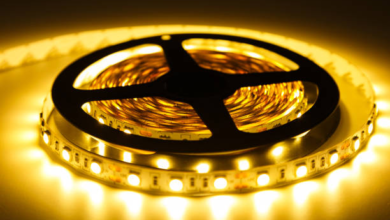Outdoor Security Cameras: Wired vs Wireless Setup Guide

Security cameras provide peace of mind by safeguarding your home’s perimeter. Choosing between wired and wireless systems can be challenging, with each offering unique advantages. This guide delves into the setup process, pros, and considerations for both types, equipping you to make a well-informed decision. Explore the flexibility of wireless cameras versus the steady reliability of wired systems and find the ideal solution to enhance your home security effectively.
Understanding the Two Setup Types
What Defines a Wired Outdoor Security Camera
Wired outdoor security cameras are connected to a recording device and power source via cables. This traditional setup provides a reliable connection, ensuring constant power and stable data transfer. Primarily, wired cameras are installed where long-term surveillance is required, and steady power is readily accessible. They are known for delivering high-definition video with minimal interference, making them a favored choice for many homeowners seeking dependable security solutions.
What Defines a Wireless Outdoor Security Camera
Wireless outdoor security cameras use Wi-Fi for data transmission and are typically powered by batteries or solar panels. These cameras stand out due to their flexibility and ease of installation—mount them wherever your Wi-Fi reaches. Designed for adaptability, wireless cameras are ideal for locations lacking traditional power sources. Users can enjoy remote access to live feeds via smartphones or computers, enhancing real-time monitoring capabilities.
Why Homeowners and Renters Choose Each Type
Homeowners often prefer wired systems for their permanence and reliability—ideal for frequently monitored properties. Renters and those prioritizing flexibility typically lean towards wireless cameras, allowing hassle-free installation and relocation. While wired systems offer consistent uptime and superior data quality, wireless options provide ease of use and convenient mobile surveillance, catering to varied lifestyle and property requirements without compromising security.
Benefits of Wired Outdoor Security Cameras
Reliable Power Supply and Continuous Operation
Wired cameras draw uninterrupted power from electrical outlets, accommodating non-stop surveillance. This removes the need to worry about battery life or frequent power-ups, ensuring ongoing monitoring. With a consistent power source, these cameras maintain optimal performance, providing continuous footage that is indispensable for detailed reviews or real-time security checks, fulfilling the demands of extensive, unfaltering property surveillance.
Stable Data Transmission for Clearer Footage
Wired systems offer stable data transfer, producing uncompressed, high-quality footage. They are less susceptible to interference or lag compared to wireless ones. This stability means clearer, more reliable video, crucial for capturing fine details like facial features or license plates in varying conditions. Wired solutions guarantee that critical evidence is recorded accurately, serving as a dependable record of events around your property.
Ideal for Permanent Homes and Long-Term Monitoring
For stable security setups, wired cameras are perfect—they’re a long-term investment providing steadfast surveillance. Owners of permanent residences value the consistent, reliable monitoring provided by these systems. Once installed, maintenance is minimal, ensuring seamless operation over extended periods, making them suitable for homeowners seeking continuous, thorough property coverage without the need for frequent adjustments or part replacements.
Advantages of Wireless Outdoor Security Cameras
Flexible Installation and Easy Relocation
Wireless outdoor cameras can be installed quickly and easily relocated as needed. Without the constraints of wires, they adapt to your changing security needs, making them perfect for renters or for areas that require temporary monitoring. Place them anywhere Wi-Fi reaches, from entryways to detached garages, and enjoy the flexibility to adjust positions effortlessly, ensuring optimal coverage at all times without permanent changes.
Smart Connectivity and Remote Monitoring
Wireless cameras enable remote access, allowing users to monitor their property from anywhere via mobile devices. With smart features like motion alerts and live streaming, they fit seamlessly into modern, connected lifestyles. Ideal for tech-savvy users, these cameras offer convenience and real-time surveillance, transforming smartphones into portable security control centers, ensuring you remain informed and in control, no matter your location.
Perfect Choice for Renters and Temporary Setups
Renters find wireless security solutions appealing due to their non-intrusive setup—no holes or hardwired connections are necessary. These cameras offer a temporary yet effective security measure that adapts to rental terms or short-term living arrangements. Their easy removal means zero damage, providing peace of mind for those who value flexibility without sacrificing security, ensuring adaptable protection across different living situations.
Choosing the Right Setup for Your Home
Match Your Lifestyle and Property Type
Select a security camera system that complements your lifestyle and the nature of your property. Assess your need for mobility versus permanence and evaluate how each camera type fits with these needs. Wired systems suit established and permanent settings, while wireless cameras offer versatility. Your choice should align with daily routines, security preferences, and the physical layout of your home for best results.
Evaluate Power Access, Internet Strength, and Placement
Consider the availability of power sources and strength of your internet connection when deciding on a camera type. Wired cameras need a reliable power outlet nearby, whereas wireless options require strong Wi-Fi signals for optimal performance. Strategically plan camera placement, balancing security needs with technical requirements. Ensuring these aspects align guarantees the chosen system operates efficiently, securing your property effectively.
Combine Wired and Wireless Options for Full Coverage
A hybrid approach—using both wired and wireless cameras—ensures comprehensive coverage. Wired cameras provide stable, in-depth surveillance for critical areas, while wireless units cover broader, less accessible spots. This mixed strategy maximizes the strengths of each type, enhancing overall security. A tailored setup fosters a robust surveillance network, suited to diverse property layouts and evolving security demands, offering peace of mind and strategic flexibility.
Conclusion
Choosing between wired and wireless outdoor camera systems depends on multiple factors, including lifestyle, property layout, and personal security goals. Wired setups offer stable, reliable performance ideal for long-term installations, while wireless solutions provide flexibility and easier relocation for evolving needs. Consider power sources, internet stability, and installation preferences to determine your perfect fit. For truly comprehensive protection, combining both types can create a balanced system that enhances surveillance coverage, strengthens deterrence, and ensures lasting peace of mind.



